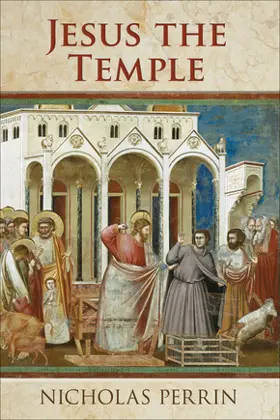

Jesus the Temple
Pages
240
Publisher
Baker Academic
Published
11/1/2010
ISBN-13
9780801045387
The ancient Jewish temple was not just a religious center--it was a totalizing institution, simultaneously seen as a place, a people, and a person. Many scholars maintain that it was the early Christians who entertained the notion that the temple had been re-established in both the person of Jesus and in the church. Perrin, however, argues that the idea of Jesus as temple dates back to Christ himself and that he saw his following as the new temple movement, the social and confessional boundaries of which were marked off by allegiance to him. Perrin's extensive Introduction offers an overview of the gospel picture of who Jesus was: Paul's perspective in 1 Corinthians; the approaches of the New Quest of the historical Jesus and the Third Quest movement of the prophet; and the kingdom expectations of contemporary exegetes. And he sets forth the basis for the book's premise: that Jesus of Nazareth saw himself and his movement as those who both anticipated and embodied Yahweh's coming kingdom.
Chapter 1 discusses Jesus's call to be the new temple and its shared characteristics with his contemporaries--the Psalms of Solomon sect, the Qumran covenanters, and John the Baptist's following.
Chapter 2 moves ahead to the time of Paul and the early church, and looks at how primitive Christianity situated itself in relation to the temple.
Chapter 3 focuses on interpretations and implications of Jesus's "Cleansing of the Temple."
Chapter 4 explores the distinctive economic, social, and spiritual aspects of Jesus's temple movement in counterpoint to the failed temple ministry of his opponents.
Chapter 5 examines Jesus's eschatological discourses (Mark 12 and 13), and his last supper with the disciples where he affirms his unique status as high priest of the temple movement.
By viewing Jesus as temple, Perrin reveals an enriched understanding of his ministry, teachings, death, and resurrection, and effectively closes the historical gap between founder and movement, between "Jesus" and "Christ." Jesus the Temple takes scholars, students, teachers, and preachers on a dynamic journey of discovery, revealing an answer to the foundational question of faith: Who was Jesus?
Chapter 1 discusses Jesus's call to be the new temple and its shared characteristics with his contemporaries--the Psalms of Solomon sect, the Qumran covenanters, and John the Baptist's following.
Chapter 2 moves ahead to the time of Paul and the early church, and looks at how primitive Christianity situated itself in relation to the temple.
Chapter 3 focuses on interpretations and implications of Jesus's "Cleansing of the Temple."
Chapter 4 explores the distinctive economic, social, and spiritual aspects of Jesus's temple movement in counterpoint to the failed temple ministry of his opponents.
Chapter 5 examines Jesus's eschatological discourses (Mark 12 and 13), and his last supper with the disciples where he affirms his unique status as high priest of the temple movement.
By viewing Jesus as temple, Perrin reveals an enriched understanding of his ministry, teachings, death, and resurrection, and effectively closes the historical gap between founder and movement, between "Jesus" and "Christ." Jesus the Temple takes scholars, students, teachers, and preachers on a dynamic journey of discovery, revealing an answer to the foundational question of faith: Who was Jesus?
- Contents
- Introduction: Turning the Tables
- 1. "Who Wanted You to Flee the Coming Wrath?" John the Baptizer and the Anatomy of Counter-Temple Movements
- 2. "Don't You Know That You Yourselves Are the Temple of God?" The Early Church as a Counter-Temple Movement
- 3. "Destroy This House!" Jesus's Action in the Temple
- 4. "Forgive Us Our Debts": Announcing the Kingdom among the Poor
- 5. "Thy Kingdom Come!" Implementing the Kingdom among the Impure
- Conclusion: Issuing Some New Tables and Tabling Some New Issues
- Indexes